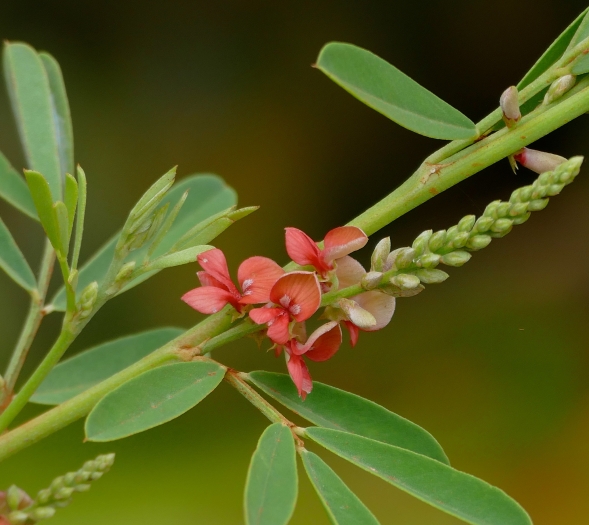Guatemalan Indigo
(Indigofera suffruticosa)
Guatemalan Indigo (Indigofera suffruticosa)
/
/

Bernard DUPONT
CC BY-SA 2.0























Estimated Native Range
Summary
Guatemalan Indigo is valued for its historical use in producing indigo dye, which was a major commodity in the trade markets of the past. Today, it is appreciated for its ornamental flowers and its ability to adapt to various soil types. It is used in natural dye gardens, as a border plant, and in butterfly gardens due to its attractiveness to pollinators. It thrives in full sun and requires low to medium amounts of water, making it suitable for xeriscaping. While it can adapt to different soil drainage rates, it prefers well-drained soils. Gardeners should be cautious, as Indigofera suffruticosa can become invasive outside its native range, and it is important to consult local regulations before planting.CC BY-SA 4.0
Plant Description
- Plant Type: Subshrub
- Height: 2-3 feet
- Width: 2-3 feet
- Growth Rate: Rapid
- Flower Color: Pink
- Flowering Season: Summer
- Leaf Retention: Evergreen
Growth Requirements
- Sun: Full Sun
- Water: Low, Medium
- Drainage: Slow, Medium, Fast
Common Uses
Bee Garden, Bird Garden, Butterfly Garden, Drought Tolerant, Groundcover, Hummingbird Garden
Natural Habitat
native to tropical and subtropical regions of the Americas, including Mexico, the Caribbean, Central America, and South America
Other Names
Common Names: True Indigo, Anil Indigo, Small-Leaved Indigo, Bengal Indigo, Ceylon Indigo, Indigo Plant, Madras Indigo, West Indian Indigo, Wild Indigo, Anil
Scientific Names: , Indigofera suffruticosa, Indigofera argentea, Indigofera anil, Indigofera suffruticosa subsp. suffruticosa, Indigofera guatimalensis, Indigofera drepanocarpa, Indigofera suffruticosa f. obtusifolia, Indigofera suffruticosa var. canescens, Indigofera uncinata
GBIF Accepted Name: Indigofera suffruticosa Mill.